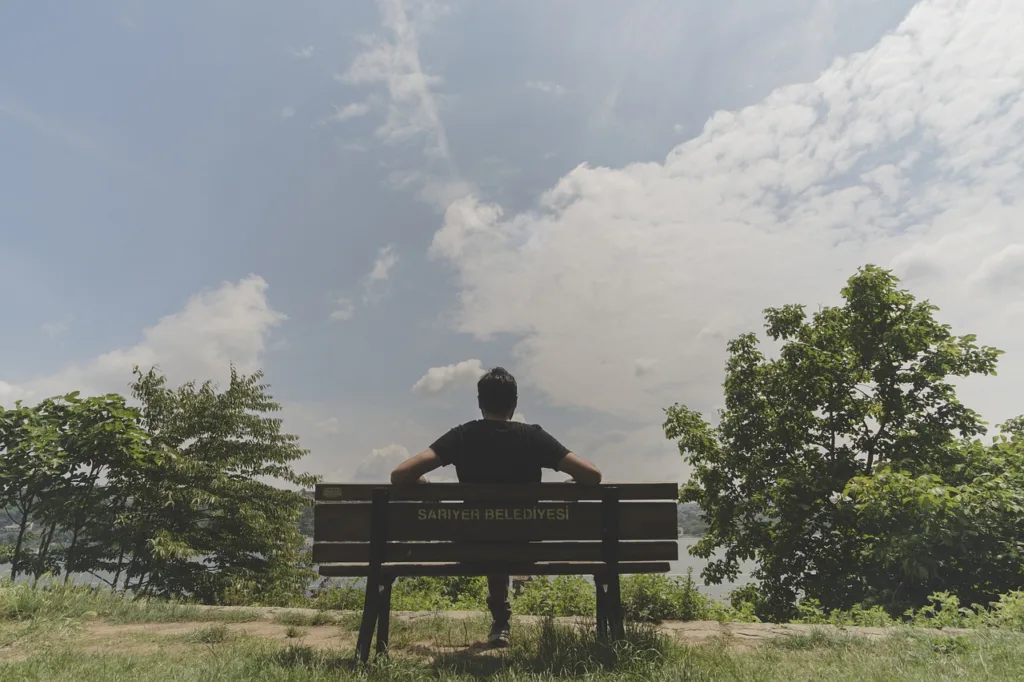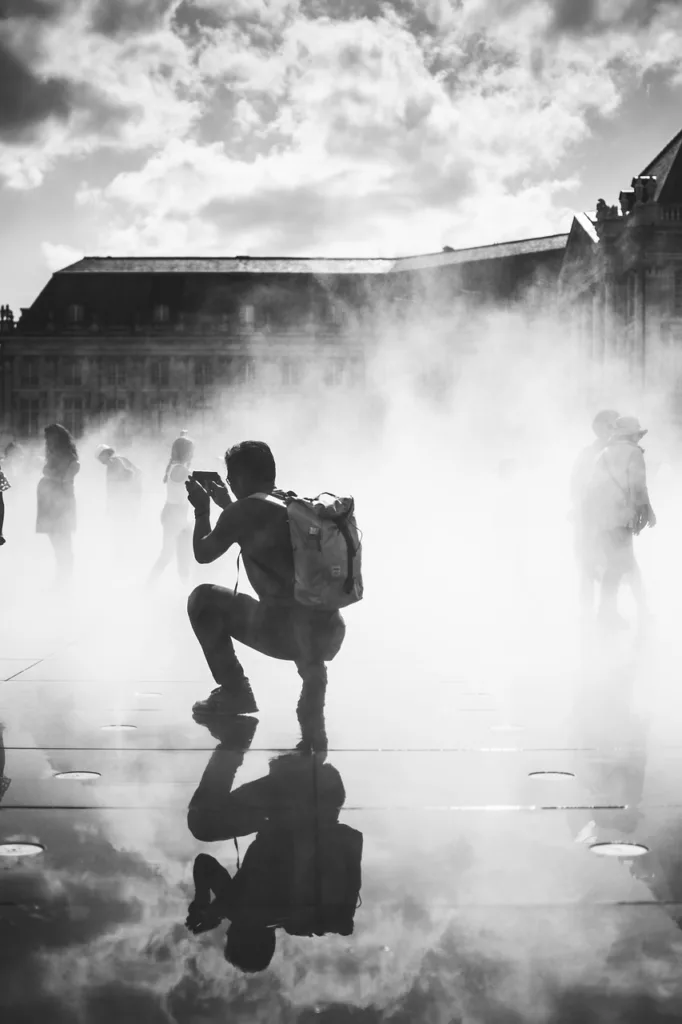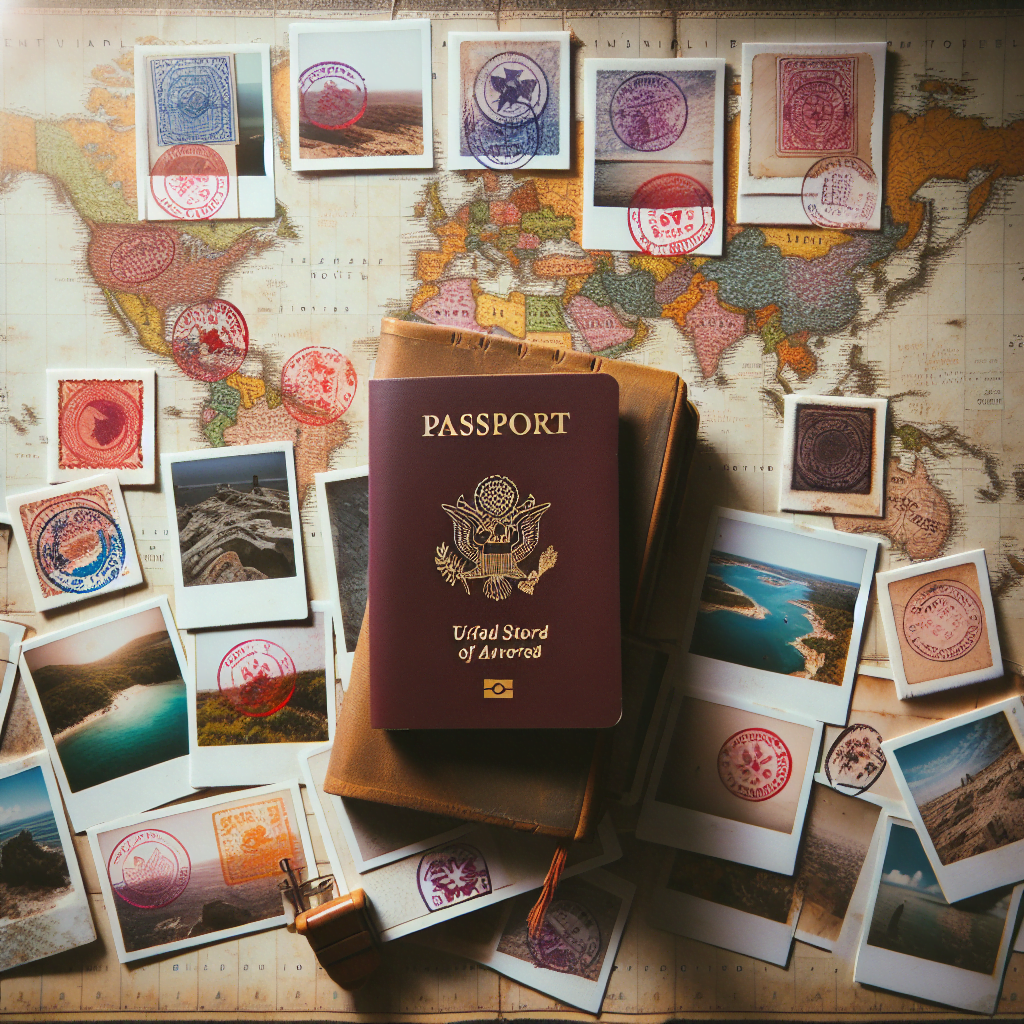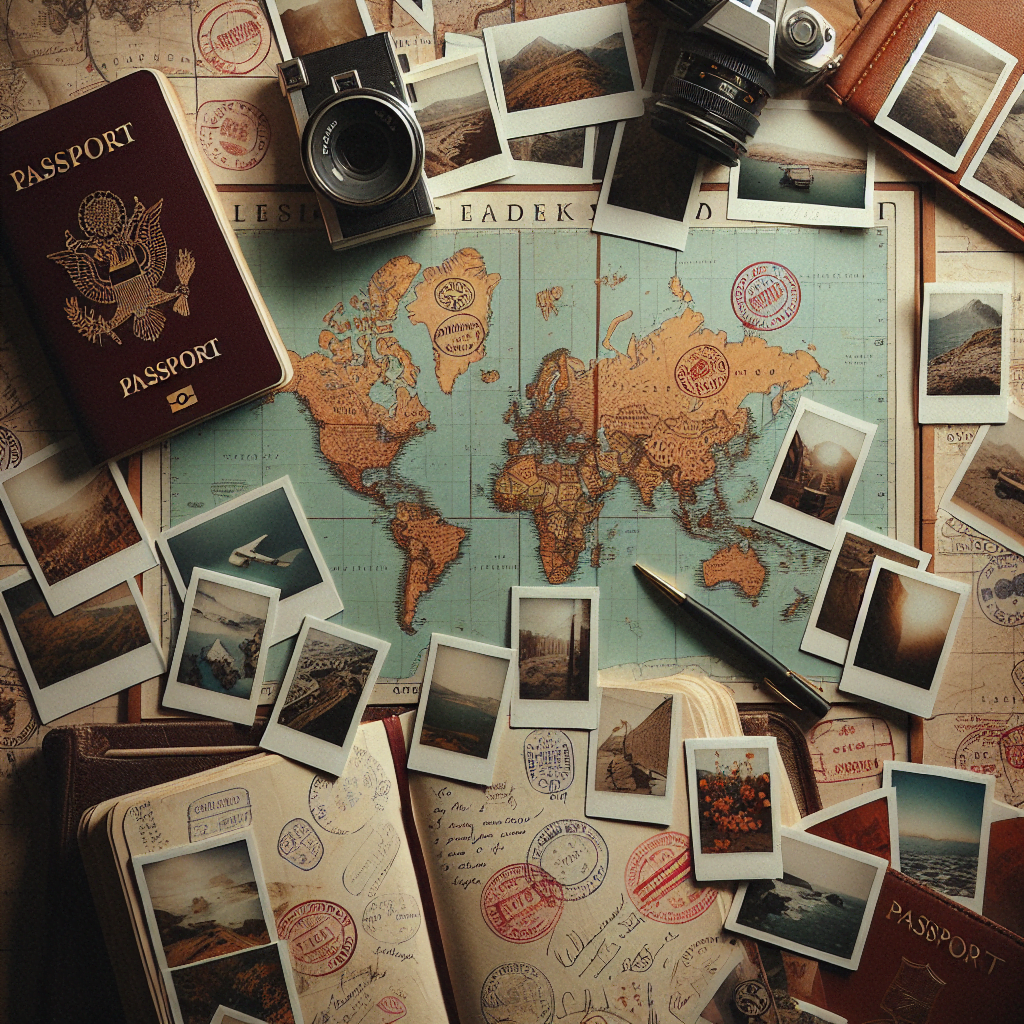When it comes to documenting your travels, there are countless ways to capture the moments that will become treasured memories. From snapping vibrant photographs to keeping a detailed travel journal, you have the power to preserve the sights, sounds, and emotions of your adventures in the most personal way possible. So, whether you prefer to immortalize your journeys through vivid storytelling or compiling a breathtaking photo album, the choice is yours. Let’s explore the best ways to document your travels and create a cherished keepsake that will transport you back to those incredible moments again and again. Traveling can be an incredibly enriching experience, full of new sights, sounds, and experiences. To ensure that these memories last a lifetime, it’s important to document your travels in a meaningful and creative way. From photography to journaling, social media, and creating travel blogs or websites, there are countless ways to capture and share your adventures with others. In this comprehensive article, we will explore the best ways to document your travels and provide tips and advice for each method.
Table of Contents
Photography
Choosing the right camera
When it comes to documenting your travels through photography, one of the most important decisions you’ll make is choosing the right camera. While smartphones nowadays offer impressive photo quality, investing in a dedicated camera can elevate your travel photography to the next level. Consider factors such as image quality, versatility, size, and weight when selecting a camera that suits your needs. Whether you opt for a DSLR, mirrorless, or compact camera, choose one that feels comfortable to use and produces high-quality images.
Learning basic photography skills
Before you embark on your travels, take the time to learn some basic photography skills. Understanding concepts such as exposure, composition, and lighting will greatly improve the quality of your photos. Online tutorials, workshops, or even a local photography class can provide valuable insights and techniques. Experiment with different settings, angles, and perspectives to capture unique shots that truly showcase your travel experiences.
Capturing iconic landmarks
While it’s tempting to capture every single moment during your travels, make sure to also focus on capturing the essence of the places you visit. Iconic landmarks provide excellent opportunities to do just that. Whether it’s the Eiffel Tower, the Great Wall of China, or the Taj Mahal, take the time to compose your shots creatively. Consider different angles, perspectives, and lighting conditions to capture these landmarks in a unique and memorable way.
Taking candid shots of locals
One of the most rewarding aspects of travel is the opportunity to interact with locals and immerse yourself in their culture. To document these connections and experiences, take candid shots of the people you meet along the way. Candid photography captures genuine emotions and tells stories that words alone cannot convey. Always be respectful and ask for permission when taking photos of individuals, and try to capture their daily lives and unique characteristics.
Creating a photo journal
A photo journal is a fantastic way to document your travels in a cohesive and visually appealing manner. Rather than simply scattering your photos across various platforms, creating a photo journal allows you to curate and showcase your best shots. Organize your photos chronologically or thematically and include captions or short anecdotes to provide context and meaning to each image. Consider printing your photo journal as a physical keepsake or creating an online portfolio to share with others.
Journaling
Carrying a travel journal
In addition to capturing your adventures through photography, keeping a travel journal can add depth and richness to your documentation. A travel journal serves as a repository for your thoughts, observations, and memories. Whether it’s a handheld notebook or a digital journaling app, find a format that suits your preference and is easy to carry with you.
Writing about daily experiences
In your travel journal, take the time to write about your daily experiences. Describe the places you visit, the people you meet, and the moments that made a lasting impression on you. By recording your thoughts and emotions, you can revisit these memories years later and experience the joy of reliving your travels. Be as descriptive as possible, using vivid language that transports you back to that time and place.
Adding sketches and doodles
To add a creative touch to your travel journal, consider incorporating sketches and doodles alongside your written entries. Not only does this allow you to express your artistic side, but it also adds visual interest to your journal. You don’t need to be a professional artist; simple doodles or quick sketches can capture the essence of a place or a moment in a unique way.
Including memorable quotes and conversations
Traveling often involves engaging with locals, fellow travelers, and tour guides, each providing valuable insights and memorable conversations. Make a note of these quotes in your travel journal, as they can evoke strong memories and serve as inspiration for future adventures. Including these quotes alongside your journal entries adds depth and a personal touch to your documentation.
Reflecting on personal growth
Traveling is not just about sightseeing and collecting memories; it’s also an opportunity for personal growth and self-reflection. Use your travel journal as a space to reflect on how your experiences have impacted you and what lessons you have learned along the way. Write about personal challenges you’ve overcome or moments of clarity and self-discovery. This introspection will not only enhance your travel documentation but also serve as a valuable tool for self-growth.

Blogging
Selecting a blogging platform
If you enjoy writing and want to share your travel experiences with a wider audience, starting a travel blog is an excellent option. There are numerous blogging platforms available, such as WordPress, Blogger, or Squarespace. Research and choose a platform that aligns with your technical expertise and offers the features you desire, such as customization options, analytics, and monetization potential.
Choosing a memorable domain name
When creating a travel blog, choosing a memorable domain name is crucial. Your domain name is how readers will find and remember your blog, so make sure it reflects the theme or niche of your travel content. Aim for simplicity and avoid using numbers or hyphens, as they can be difficult to remember or type accurately.
Creating engaging and visually appealing content
Once you have set up your travel blog, focus on creating engaging and visually appealing content. Share your travel stories, anecdotes, and recommendations in a way that captivates your readers. Utilize high-quality photographs to complement your written content and make your blog visually appealing. Break up your text with subheadings, bullet points, and images to improve readability and enhance the overall user experience.
Sharing travel tips and recommendations
As a travel blogger, one of your goals should be to provide practical travel tips and recommendations to your readers. Share your insights on destinations, accommodations, transportation, and local customs. Whether it’s budget travel tips, off-the-beaten-path recommendations, or cultural etiquette advice, make your blog a go-to resource for fellow travelers seeking information and inspiration.
Interacting with readers through comments
One of the most rewarding aspects of travel blogging is the opportunity to connect with readers from around the world. Encourage engagement and interaction by responding to comments on your blog posts. Take the time to engage in meaningful conversations, answer questions, and provide additional insights when needed. This not only builds a sense of community but also establishes you as a trusted source of travel information.
Video Diary
Using a video camera or smartphone
While photography captures still moments, video allows you to capture the movements, sounds, and atmosphere of your travels. Consider using a dedicated video camera or your smartphone to document your adventures in video format. Smartphones nowadays offer impressive video quality, making them a convenient and accessible option for recording your travels.
Planning and organizing video footage
To create a compelling video diary, it’s essential to plan and organize your video footage. Before you embark on your travels, think about the moments and experiences you want to capture on video. Create a shot list or a rough storyboard to guide you. As you record your footage, organize it into folders or categories to make the editing process more manageable when you return home.
Including voiceovers and background music
To enhance the storytelling aspect of your video diary, consider including voiceovers and background music. Voiceovers can provide a narration or commentary that adds depth and context to your footage. Choose background music that complements the mood and atmosphere of your videos, but be mindful of copyright restrictions and consider using royalty-free or licensed music.
Editing to create a compelling narrative
Editing is where the magic happens in creating a compelling video diary. Trim down your footage to the essential moments, arrange clips in a logical and coherent sequence, and add transitions to create a seamless flow. Experiment with different editing techniques such as overlays, time-lapse, or slow-motion effects to add visual interest to your videos. Don’t forget to include captions or text overlays to provide additional context.
Uploading and sharing on video platforms
Once your video diary is complete, it’s time to share your creations with the world. Upload your videos to popular video platforms such as YouTube or Vimeo, ensuring that you optimize your videos for searchability and discoverability. Write engaging titles, descriptions, and tags that accurately represent your video content, and share your videos on social media platforms to reach a wider audience.

Social Media
Choosing the right platforms
Social media platforms have become an integral part of travel documentation, allowing you to share your experiences with friends, family, and even strangers. However, it’s important to choose the right platforms that align with your goals and preferences. Consider popular platforms such as Instagram, Facebook, Twitter, or YouTube, and select those that best showcase your travel content. Each platform has its own strengths and audience, so choose wisely.
Sharing photos and videos in real-time
Social media provides a real-time platform to share your travel photos and videos with your followers. Take advantage of this immediacy and post regular updates, capturing and sharing the essence of each destination as you experience it. Share stunning sunsets, mouth-watering local cuisine, or interesting encounters to keep your audience engaged and intrigued by your travels.
Adding location tags and hashtags
To maximize the reach and discoverability of your social media posts, take advantage of location tags and hashtags. Location tags allow others to easily find your photos and videos when searching for specific destinations. Hashtags, on the other hand, enable your content to be seen by a wider audience with similar interests. Research and use relevant hashtags that are popular within the travel community to increase your visibility.
Engaging with fellow travelers and followers
Social media is not just about sharing content; it’s also about building connections and engaging with others. Take the time to interact with fellow travelers and followers by responding to comments, asking questions, and initiating conversations. Engaging with others not only builds a community but also provides opportunities for collaboration, inspiration, and connecting with like-minded individuals.
Archiving and organizing content
As you continue to document your travels on social media, it’s essential to archive and organize your content effectively. Social media platforms tend to display content in a chronological order, making it challenging for others to navigate and explore your older posts. Utilize tools such as albums or collections to group similar content together or consider creating highlights that showcase the best moments from each destination.
Collecting Mementos
Collecting postcards and stamps
One of the most traditional ways of documenting travels is by collecting postcards and stamps. Postcards capture the essence of each destination, featuring iconic landmarks, beautiful landscapes, or local artwork. Sending postcards to yourself or loved ones also provides a tangible memento of your travels. Collecting stamps from different countries adds an additional layer of cultural significance and serves as a visual representation of your journey.
Saving ticket stubs and maps
Ticket stubs and maps are often overlooked but can be cherished mementos of your travels. Whether it’s airline tickets, train tickets, museum tickets, or concert tickets, keep them as reminders of the places you’ve been and the experiences you’ve had. Maps, whether they are city maps, transit maps, or hiking maps, can be marked up with notes and memories, serving as a visual representation of where you’ve explored.
Gathering unique souvenirs
Souvenirs are a popular way to commemorate your travels and bring a piece of each destination back home with you. However, instead of opting for generic souvenirs, challenge yourself to collect unique and meaningful items. Look for locally made crafts, handmade jewelry, or artisanal products that reflect the culture and heritage of the place you’re visiting. These souvenirs will serve as tangible reminders of your experiences.
Keeping a physical travel scrapbook
For those who prefer a hands-on approach to documenting their travels, creating a physical travel scrapbook can be a fulfilling option. Use your collected postcards, ticket stubs, maps, and other mementos to create visually appealing pages that encapsulate your travel experiences. Include handwritten notes, captions, and sketches to add a personal touch. A travel scrapbook is not only a creative outlet but also a cherished keepsake that can be shared with others.
Creating a personalized memory box
If you prefer a more three-dimensional approach to documenting your travels, consider creating a personalized memory box. This box can hold various items collected during your travels, such as seashells, rocks, small trinkets, or even sand. Label each item with the location and date, and keep them safe within the memory box. Whenever you open the box, you’ll be transported back to those travel moments and the joy they brought.

Creating a Travel Blog
Choosing a niche or travel theme
When creating a travel blog, choosing a niche or travel theme can help you stand out in the crowded online travel space. Whether it’s budget travel, luxury travel, solo travel, or adventure travel, define your focus and create content that caters to that specific audience. By honing in on a niche, you can establish yourself as an expert in that area and attract readers who are interested in what you have to offer.
Writing engaging and informative articles
As a travel blogger, your primary goal should be to create engaging and informative articles that resonate with your readers. Share your travel stories, adventures, and insights in a way that captivates and inspires your audience. Use descriptive language, vivid imagery, and personal anecdotes to transport your readers to the destinations you’ve visited. Incorporate practical tips, recommendations, and off-the-beaten-path suggestions to make your articles valuable resources for fellow travelers.
Including stunning photographs
In addition to well-crafted written content, stunning photographs are an essential element of a successful travel blog. Invest time and effort into capturing high-quality images that not only showcase the beauty of each destination but also tell a story. Consider the composition, lighting, and perspective of your photos to create captivating visuals that entice readers to explore more of your blog.
Sharing personal anecdotes and stories
As a travel blogger, your unique perspective and personal experiences are what sets you apart. Share personal anecdotes and stories that offer a glimpse into your travel journey. Whether it’s a funny mishap, a heartwarming encounter, or a moment of self-discovery, these personal stories add authenticity and relatability to your blog. Remember to be genuine and honest in your writing, as readers appreciate authenticity and real-life experiences.
Providing practical travel advice
While storytelling is important, providing practical travel advice is equally valuable to your readers. Share tips and recommendations on various aspects of travel, such as transportation, accommodations, local customs, and budgeting. Include detailed information on the best time to visit certain destinations, visa requirements, and lesser-known attractions. By offering practical advice, you position yourself as a helpful resource for fellow travelers, fostering trust and establishing yourself as an authority in the travel blogging community.
Making a Travel Map
Using online map creation tools
Creating a travel map is a great way to visually represent the places you’ve visited and the routes you’ve taken. Online map creation tools such as Google My Maps or MapQuest make it easy to plot your destinations and customize your map. These tools allow you to add pins, labels, and descriptions to each location, creating an interactive and informative travel map.
Marking visited places and routes
Plotting visited places and routes on your travel map is a fun and interactive way to document your travels. Add pins or markers to represent each destination and use lines or arrows to indicate the routes you’ve taken. Customize the appearance of your markers and lines with different colors or icons to make your map visually appealing and easy to navigate.
Adding photos and notes to locations
To enhance your travel map, consider adding photos and notes to each location. Attach photos taken at each destination to their respective markers to provide a visual representation of the place. Add notes or descriptions that highlight your experiences, recommendations, or memorable moments. This way, your travel map becomes not just a geographical representation but also a repository of cherished memories.
Customizing the map with colors and icons
Make your travel map your own by customizing it with colors and icons that reflect your personal style. Choose colors that evoke the mood or atmosphere of each destination and select icons or symbols that represent specific activities or landmarks. This customization adds a personal touch and makes your travel map visually engaging and unique.
Printing and displaying the travel map
Once your travel map is complete, consider printing it and displaying it prominently in your home or office. Printing a physical copy of your travel map allows you to appreciate and reflect on your travels daily. Frame the map or create a large poster that serves as a conversation starter and a constant reminder of the incredible adventures you’ve had.

Creating a Photo Album
Selecting high-quality prints
To create a visually appealing and durable photo album, start by selecting high-quality prints of your favorite travel photographs. Choose a reputable printing service or invest in a good photo printer to ensure that your images are vibrant, sharp, and long-lasting. Consider using matte or lustre finishes instead of glossy to minimize reflections and fingerprints.
Organizing photos chronologically
When arranging your travel photos in the album, consider organizing them chronologically to create a coherent visual narrative. Start with the earliest photos from your trip and progress through each destination in a logical order. This chronological flow allows viewers to immerse themselves in your travel journey and witness the progression of your adventures.
Adding captions and descriptions
To provide context and meaning to your photographs, add captions and descriptions alongside each image in the photo album. Include the location, date, and any relevant anecdotes or memories associated with the photo. This adds depth to your documentation and enables viewers to better understand the significance of each image.
Designing layouts and themes
A well-designed photo album enhances the visual appeal of your travel documentation. Experiment with different layouts, such as collages or single-photo spreads, to create visually striking pages. Consider incorporating themes or motifs that reflect the atmosphere of each destination. For example, use beach-themed backgrounds for tropical destinations or rustic motifs for countryside escapes.
Preserving the album for future generations
When creating a photo album, it’s important to consider its long-term preservation to ensure that future generations can enjoy and appreciate your travels. Use acid-free archival-quality materials, such as photo-safe adhesive and acid-free sleeves, to protect your prints from deterioration. Store the album in a cool, dry place away from direct sunlight to minimize fading and discoloration over time.
Creating a Travel Website
Choosing a website builder or CMS
Creating a travel website allows you to showcase your travel content in a professional and organized manner. To get started, choose a website builder or content management system (CMS) that suits your technical skills and budget. Popular options include WordPress, Wix, and Squarespace. Consider factors such as ease of use, customization options, and available templates when making your selection.
Designing an attractive homepage
The homepage of your travel website is the first impression visitors will have of your content. Design an attractive and welcoming homepage that accurately represents your travel brand and style. Use high-quality imagery, captivating headlines, and clear navigation menus to guide visitors to different sections of your website. Make it easy for users to find your blog, photo galleries, and other travel-related content.
Organizing travel content into sections
To make your travel website user-friendly and organized, divide your travel content into sections or categories. For example, have separate pages or sections for your travel blog, photo galleries, destination guides, and practical travel tips. Use clear headings and subheadings to guide visitors to the specific content they are interested in. Consider creating a search function to further improve navigation and accessibility.
Incorporating interactive maps and itineraries
Make your travel website interactive and engaging by incorporating maps and itineraries. Embed interactive maps that highlight the destinations you’ve visited and include links to relevant blog posts or photo galleries. Create detailed itineraries with recommended activities, dining options, and accommodations for specific destinations. Allow visitors to download or print these itineraries for their own travel planning.
Optimizing for search engines and mobile devices
To ensure that your travel website reaches a wider audience, it’s important to optimize it for search engines and mobile devices. Implement search engine optimization (SEO) techniques such as using relevant keywords, meta tags, and descriptive URLs to improve your website’s visibility in search engine results. Additionally, ensure that your website is responsive and mobile-friendly, as more and more users access websites through their smartphones and tablets.
In conclusion, documenting your travels is a wonderful way to relive your experiences and share them with others. Whether you choose to capture moments through photography, journaling, blogging, video diaries, social media, mementos, creating travel maps, photo albums, or websites, there are endless possibilities to immortalize your adventures. Find the methods that resonate with you the most, experiment, and create a comprehensive travel documentation that reflects your unique perspective and journey. Happy documenting!

